The Barns-Brinton House
Introduction
Text-to-speech Audio
Images
The Barns-Brinton House as it looks today

A Picture of the home before Route 1 was expanded and moved to the other side of the house
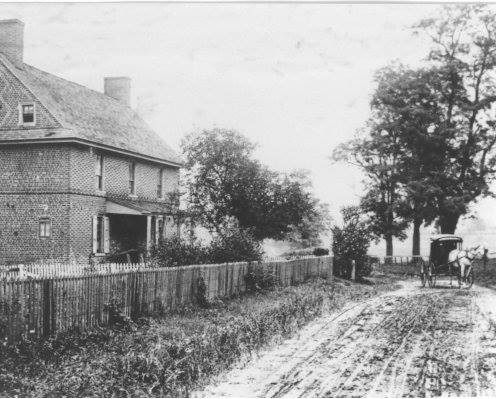
A Painting depicting the Hessian troops passing the house on their way to the Battle of Brandywine
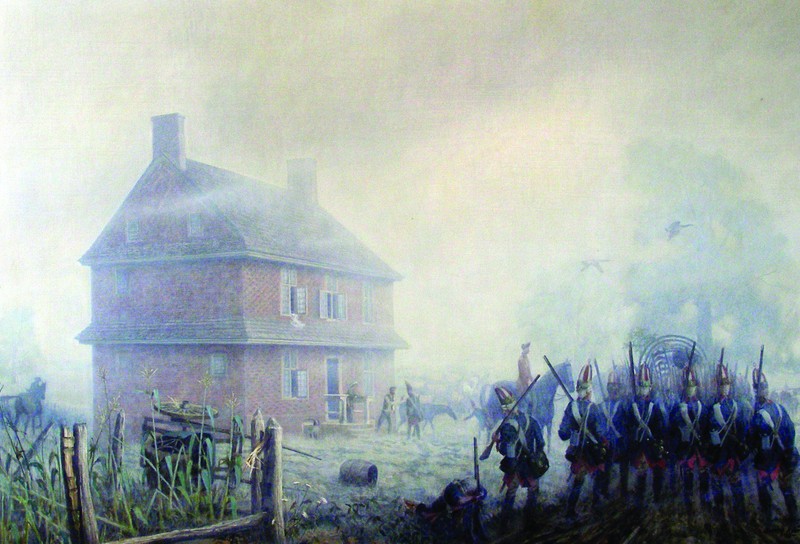
The Barns-Brinton House during its restoration in the 1970s
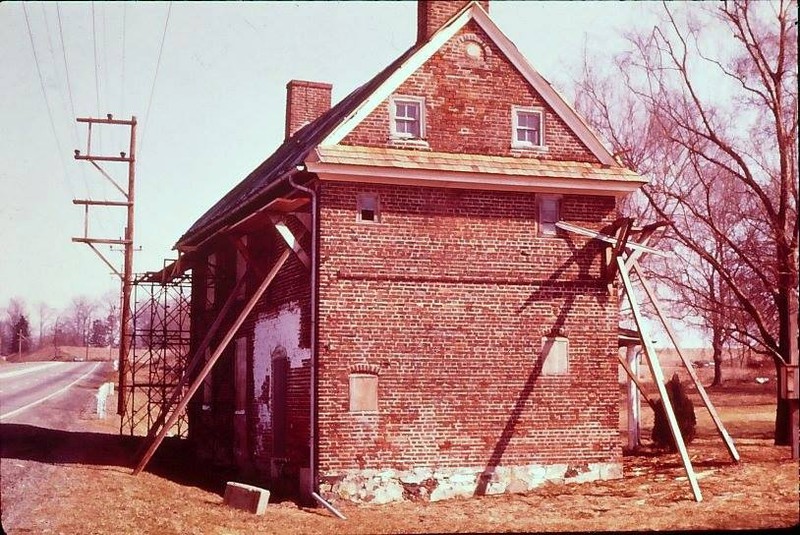
The Kennet Square Spade and Trough taking care of our gardens
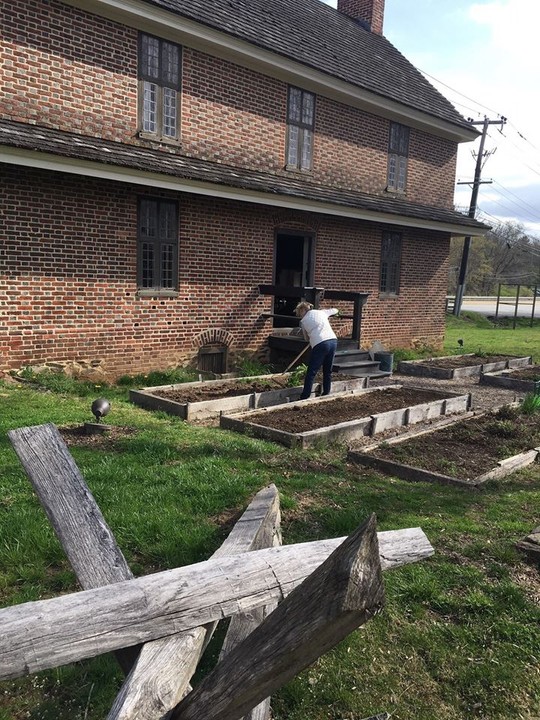
The main tavern before it was restored

The guest bedroom before the building was restored
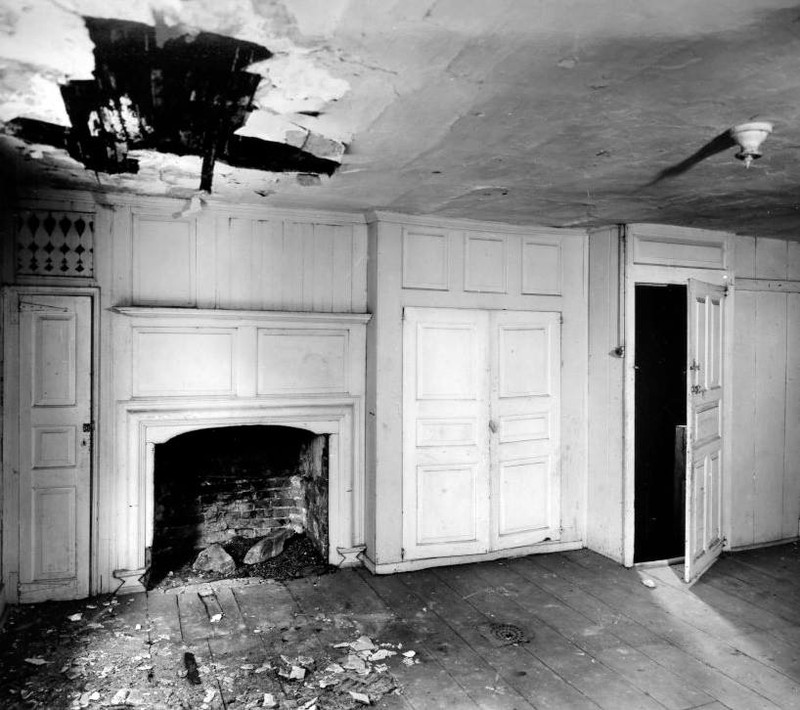
The main tavern today being used to cook historic foods
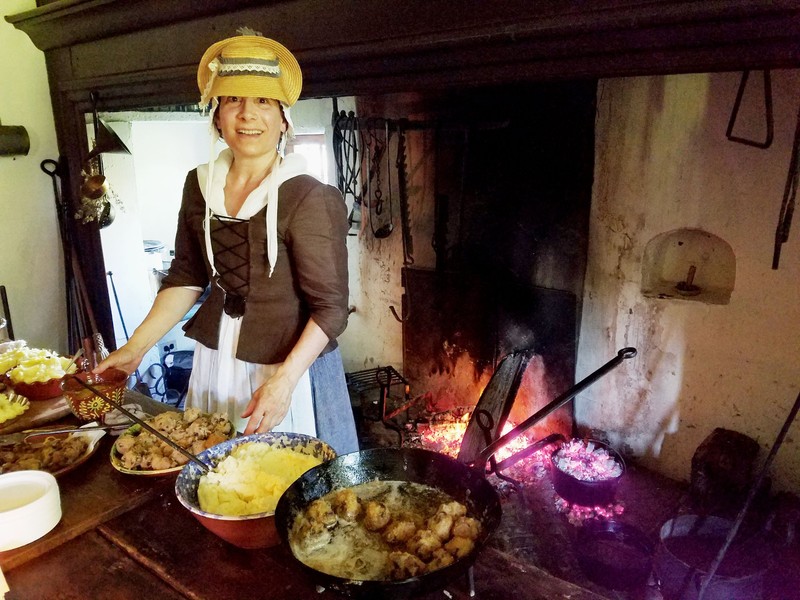
The "cage bar"
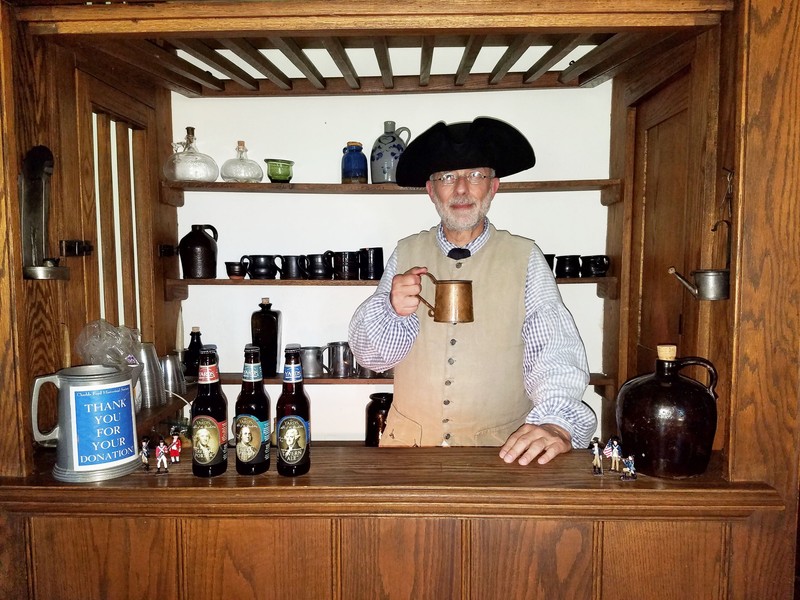

Backstory and Context
Text-to-speech Audio
When you face the front of the tavern built by William Barns. Behind you, where the footpath is now located, was the original road to Baltimore, then called “Ye Great Road to Nottingham”. Prior to the arrival of the automobile, this house could be reached within a day’s journey from Philadelphia. The house was built in 1714. It is divided into two sections, the half on the northern side containing the public rooms, both tavern and sleeping rooms, and the southern side containing the separate private quarters, parlor and bedroom. The construction of the building gives evidence it was built to be used as a tavern; however, Mr. Barns did not secure a license to operate it as a tavern until 1722.
The house is built entirely of brick with a field stone foundation. The side of the house we are facing was constructed using a Flemish bond construction. Each row contains a stretcher (the long side of the brick) alternating with a header (the short side of the brick). The headers have a Black glaze. If you look carefully at the pattern you will discern the appearance of Greek crosses. The Black glazed header bricks form the top and bottom of the crosses, the red stretcher bricks form the middle. Greek literature, history and science were important parts of the education of the early colonists, both formal and informal, and was evident in many aspects of the culture.” In addition to the brick patterning and color, there is also a course of bricks that is not flush with the rest of the wall. Can you see it above the basement level? These are the three ways this side of the home is different from and fancier (i.e. more expensive) than the other side and one of the reasons we know that this is the original front side of the building.
The sides and rear of the building uses English bond, a row of stretchers followed by a row of headers. The English bond was easier to lay and less expensive to build. Note however, the brick pattern work under the south eve, called a diaper pattern. Under the north eve there is a date stone.
Mr. Barns was a Blacksmith. He worked in iron and Black metals. As you tour the house you will want to note the variety of hinges and hardware pieces used on the doors. (H hinges, H/L hinges, Butterfly hinges and strap hinges). Most of the hardware in this house is original. It would appear Mr. Barns used his home as a showroom for his work. Also, just imagine what need the traveler would have for a Blacksmith! Bumping in a wagon or carriage over the rutted dirt roads would necessitate frequent wheel, wagon or harness repair.
Mr. Barns and his wife Elizabeth operated the house as a tavern until Mr. Barns’ death in 1731. At the time of his death, Mr. Barns was heavily in debt. His tavern and assets were sold to pay debtors. The building passed through several hands until its purchase in 1753 by James Brinton. It stayed in the Brinton family for 106 years. That is the reason for it being called the Barns-Brinton house.
In 1969, the house was purchased by the Chadds Ford Historical Society. It was restored to original condition by John Milner, a restoration architect in Chadds Ford.
The gardens you see here contain sweet and simple herbs. Today this is called an herb garden. But, the colonial herb or kitchen garden, would include all vegetables for human food and it would be the responsibility of the colonial housewife. She, with the help of the young children, would be responsible for the planting, maintaining and harvesting of the garden. The quality and quantity of her harvest would determine how well her family ate throughout the entire year.
The kitchen garden would have been very close to the house and surrounded by a stockade fence to keep the unfenced animals from destroying it. All kinds of eatable vegetation would have been planted. In addition, the colonial housewife would have made extensive use of the herbs that grew in the wild. To help insure a good harvest, in the days before pesticides and fertilizers, the colonial housewife and farmer made use of plants. All plant waste was used as animal food or compost. Certain plants were used to benefit food production.
Mr. Barns would have greeted guests here in the tavern room. The visitor would most likely have wanted a drink and something to eat. The need for refrigeration and sanitation was not understood in the early 18th century, but it was known that water and milk frequently caused disease. Therefore, drinks made from boiled water, such as teas, or alcoholic drinks would have been served. Beer was a common drink of the day for children and adults. Most likely, Mrs. Barns made her own beer. It was brewed in several strengths from a very low alcohol level (like our near beer today) to a high level of alcohol. Rum would have been served. Non alcoholic drinks such as shrub, tea made of china tea leaves or perhaps the leaves of bee balm, spearmint or peppermint, caraway, chamomile or another herb, might have also been served. Alcoholic or expensive drinks would have been kept within the barred area.
The fireplace is a cooking fireplace. Mrs. Barns would probably have done all her cooking here. The main meal of the day was served at midday. It would be the only cooked meal, with the exception of porridge or some simple fare in the morning. The evening supper would have consisted of left over dinner.
Generally, bread was baked once a week. However, if a large number of guests frequented the tavern, Mrs. Barns would have baked more often. There is no oven built into this fireplace, but there is evidence of a shed having been attached to the building at this door (to the right of the bar). The oven may have been within that shed or in a separate building that now lies below route 1.
Guest Quarters
In late afternoon or early evening, drovers herding cattle, sheep, pigs or perhaps geese to markets in Philadelphia and Baltimore might have chosen to have their evening meal and lodge for the night at William Barns Tavern. The Drovers would have mostly likely spent the night with their animals, but other travelers would have appreciated this room.
Although there was no recognized state until the late 1700s, businessmen and lawyers and other more refined gentlemen would have also traveled “Ye Great Road to Nottingham.” Women lodged in public places only when absolutely necessary. These more genteel clientele would be housed in this room for the night on straw filled pallets. If there would have been a woman lodging here for the night every attempt would have been made to insure her privacy. If this was the case it is possible that the men would be sent to the attic for the evening.
The poplar paneling surrounding the fireplace is original as is the oak flooring. The grillwork is made from cedar shakes and provides ventilation too the closets. There was no door between this room and the one used by the family on the opposite side of the house.
Elizabeth Barns, with the aid of her daughter and perhaps a neighborhood girl would have had the responsibility of cleaning this room as well as the rest of the building. As bathing was not the habit it is today, herbs would have been an important part of their housewifery in this room. A selection of chamomile, hyssop, or lavender alone or in combination, might have been included in the stuffing of the mattresses to counteract the odor of unwashed bodies.
Family Parlor
Elizabeth Barns’ family consisted of her husband, William, 4 boys and 1 girl. This is the family parlor where the Barns family would have spent their evenings before the fire. Perhaps the boys and William would mend small farm equipment, polish or oil iron items made by William, or carve wooden bowls for use in the tavern. Elizabeth and her daughter might have been employed spinning or weaving on a tape loom. Early evening was the time for this type of chore, as outside chores and housekeeping and cooking chores consumed most of the daylight hours.
Prior to the 18th century and up to the 19th century women were the primary physicians and healers. Elizabeth might have used the early evening hours to discuss and prepare various remedies with her daughter’s assistance. Throughout the summer Elizabeth and her daughter would have collected various parts of cultivated and wild herbs for use in tinctures, poultices, and teas. Some of the herbs used in remedies would have included: rue, rosemary, mint, chamomile, sage, sorrel, comfrey, St. John’s wort, feverfew, tansy, plaintain and stinging nettles.
The poplar fireplace mantel and raised paneled woodwork are original. Also of interest is the stairwell window which you can observe as you ascend the stairs to the second floor. This window was originally intended to be a window. From the outside of the building you can see the brick arch work that exists in this area and over the other small windows. Evidently during construction of the building it was decided that this window was unnecessary, for whatever reason. We know that it was bricked up during the original construction of the house as the brick and mortar used match that of the original brickwork.
Family Bedroom
This room is where the entire Barns family, all 7 of them, would have spent the night. We know that William Barns had 3 bead steads, 3 chaff mattress and 2 feather mattresses at the time of this death and most would have been used in the family bedroom. Clearly everyone shared a bed as well as sharing the bedroom.
While the furniture in the house is not furniture owned by the Barns’ it is furniture such as might have been in a typical 18th century home. The bed is a rope bed. This rope because it would stretch over time would have to be tightened regularly. On top of the ropes would have bee a box spring of straw, cornhusks and herbs, topped by a mattress of goosefeathers and 6 or more pillows and bolsters. The pegs on the walls are for hanging clothing or chairs that are not in use. The chamber pot was used by everyone at night and had to be emptied in the morning. Sometimes the urine was collected and stored for later use in dying fiber or bleaching clothing.
The clothing worn by rural colonial inhabitants was made of wool or linen. One of the benefits of linen and wool is their flame retardant properties.
1. Babies of both sexes were swaddled at birth. It was recommended that the swaddling be changed once a day. The infant’s arms were swaddled for the first 6 months, then released. At about 1 year of age they would be put into stays and a shift-type gown.
2. Toddler and preschool aged children wore a shift, a one piece dress that laced up the back with leading strings handing off the shoulders, topped with an apron and a cap. Girls usually wore one-piece dresses until puberty.
3. Women and older girls wore a shift (which also served as a nightgown), stays, a pocket, at least two petticoats, an apron, and a gown, jacket or shortgown. They wore a cap over their hair and a kerchief around their necks.
4. Men wore britches, a loose fitting shirt (which was also a night shirt), and perhaps a long waistcoat (vest) over their shirt. When boys reached 5-7, they began to dress as their fathers did. They were ‘breeched’.
As mentioned in the beginning of the tour William Brinton died in 1731. He was heavily in debt at the time of his death. His largest creditor, James Few, was awarded the house and appointed as guardian for the children. We know that about 10 years after William’s death, Elizabeth joined Kennett Meeting, only to be “read out” shortly after for drinking too heavily. What happened to the children remains unclear. It is probable that they were indentured out to local families until they reached their majorities or in the case of little Elizabeth, until she was married.
Thank you so much for taking our digital tour and we hope that you stop by the Historical Society and see these beautiful buildings for yourself.
